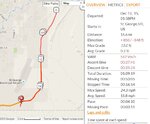Jack Tyler
Active Member
I'm reading comments that praise the nature of the hub drive ride but others praise the benefits of the mid-drive. Please help me by evaluating their pro's & con's for my intended purpose & budget.
My ebike uses will be: typical in-town commuting (level terrain), in-town recreational trail riding on maintained trails (some elevation change), and countryside travel with mixed elevation changes but nothing truly steep. Ride distances ranging from 5 to 25 miles RT before recharging.
My budget: $3K (which for the mid-drive choice, apparently eliminates Bosch mid-drives)
Do these uses recommend one choice over the other? My tentative conclusion is that they recommend a hub drive simply because, for the $3K budget, there are more hub model choices and more chance of hardware upgrades. Plus, it may make a lower budget possible, something unlikely if preferring a mid-drive.
I'd welcome your comments - pro's & con's - on this fundamental choice.
Jack
My ebike uses will be: typical in-town commuting (level terrain), in-town recreational trail riding on maintained trails (some elevation change), and countryside travel with mixed elevation changes but nothing truly steep. Ride distances ranging from 5 to 25 miles RT before recharging.
My budget: $3K (which for the mid-drive choice, apparently eliminates Bosch mid-drives)
Do these uses recommend one choice over the other? My tentative conclusion is that they recommend a hub drive simply because, for the $3K budget, there are more hub model choices and more chance of hardware upgrades. Plus, it may make a lower budget possible, something unlikely if preferring a mid-drive.
I'd welcome your comments - pro's & con's - on this fundamental choice.
Jack


